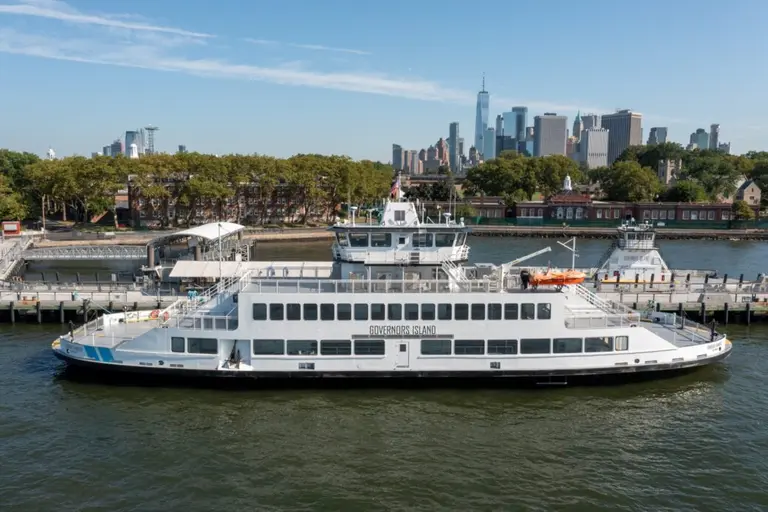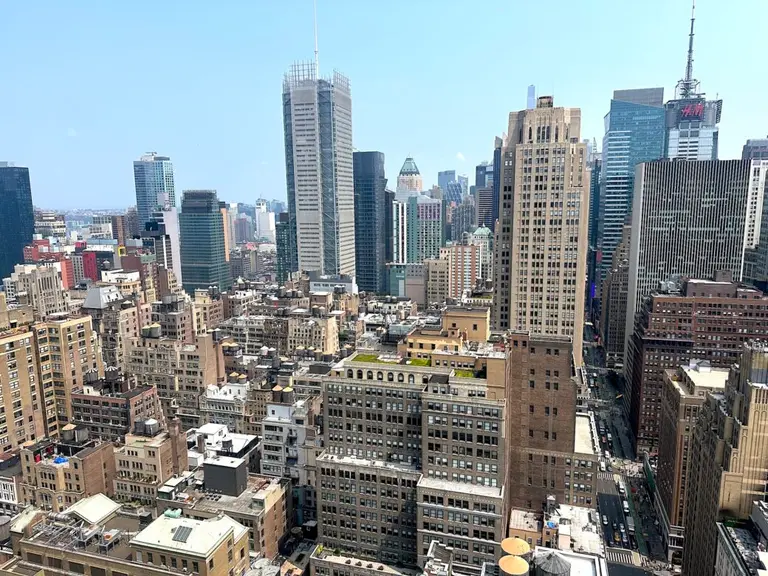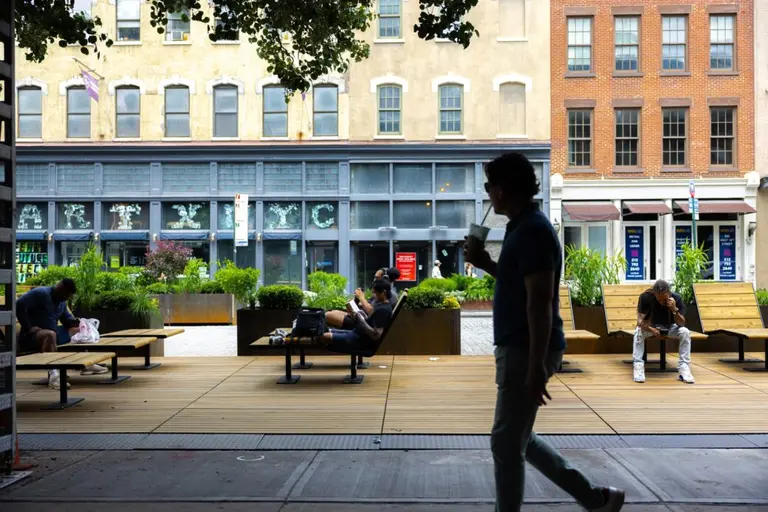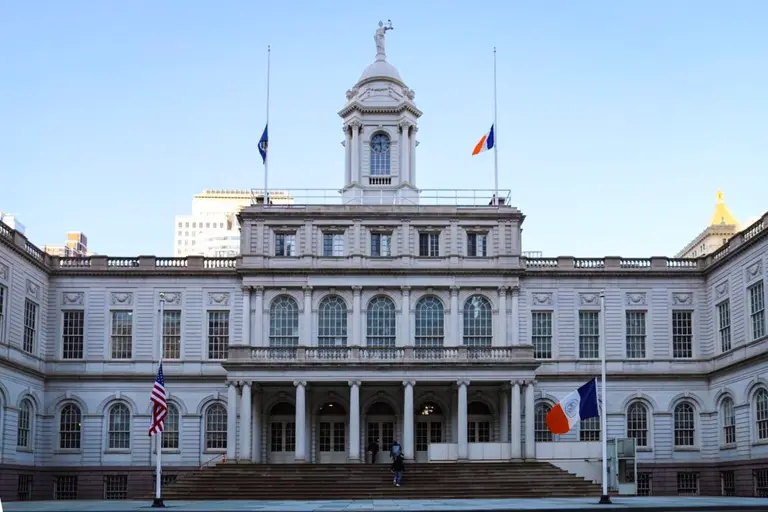Updated Midtown South rezoning plan could create nearly 10,000 new homes
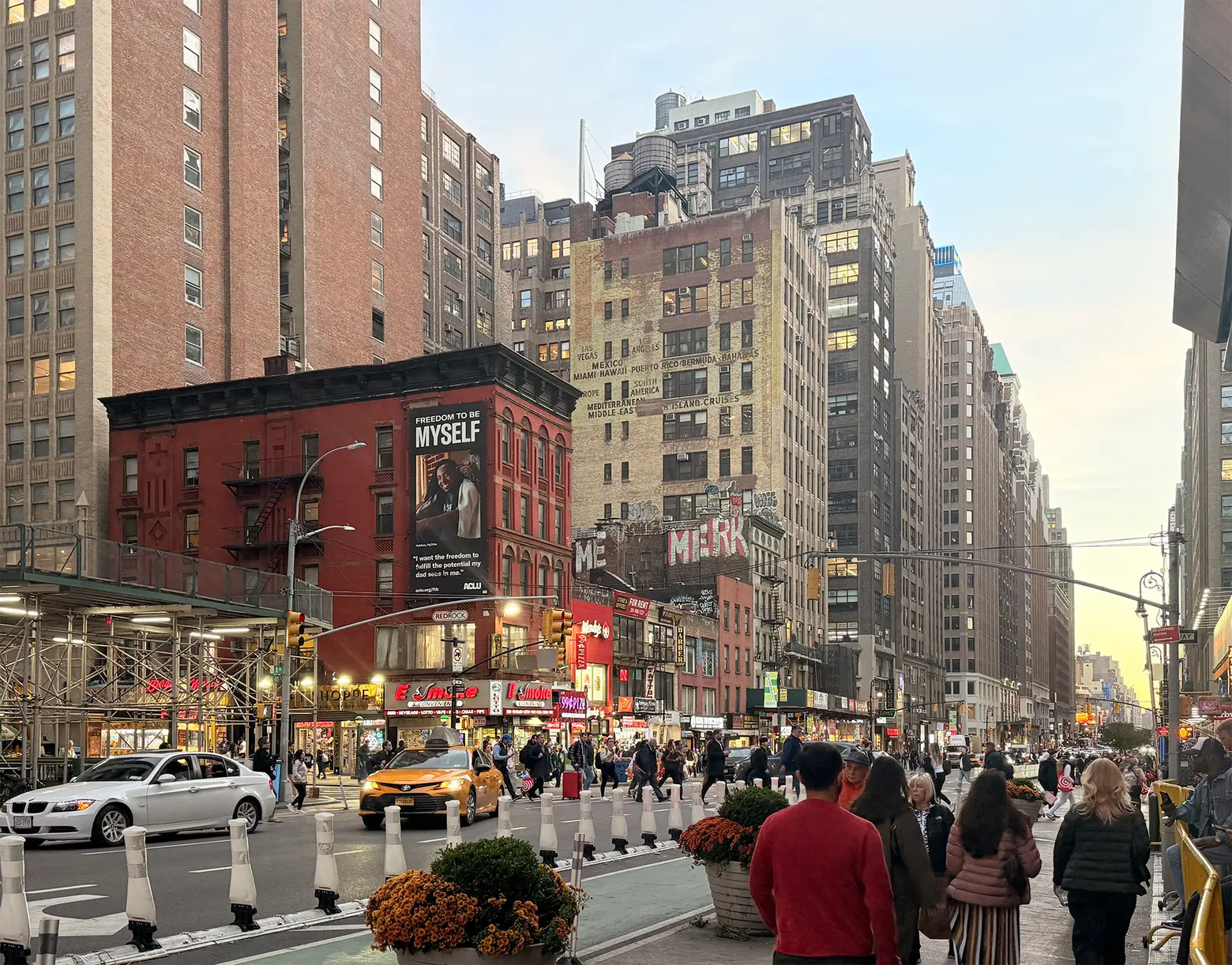
8th Avenue below 40th Street. Photo © Ondel Hylton
New zoning tools will allow the city to build bigger apartment buildings in Midtown Manhattan, doubling the new housing units permitted under a proposed rezoning. The Department of City Planning on Thursday released an updated draft of the Midtown South rezoning plan to incorporate floor area ratio (FAR) caps of 15 to 18, enabled by the state’s recent repeal of the 12 FAR cap. This change allows larger developments and roughly 9,700 new homes, up from a previous estimate of 4,000, in a 42-block area of Midtown where housing development has been largely prohibited.
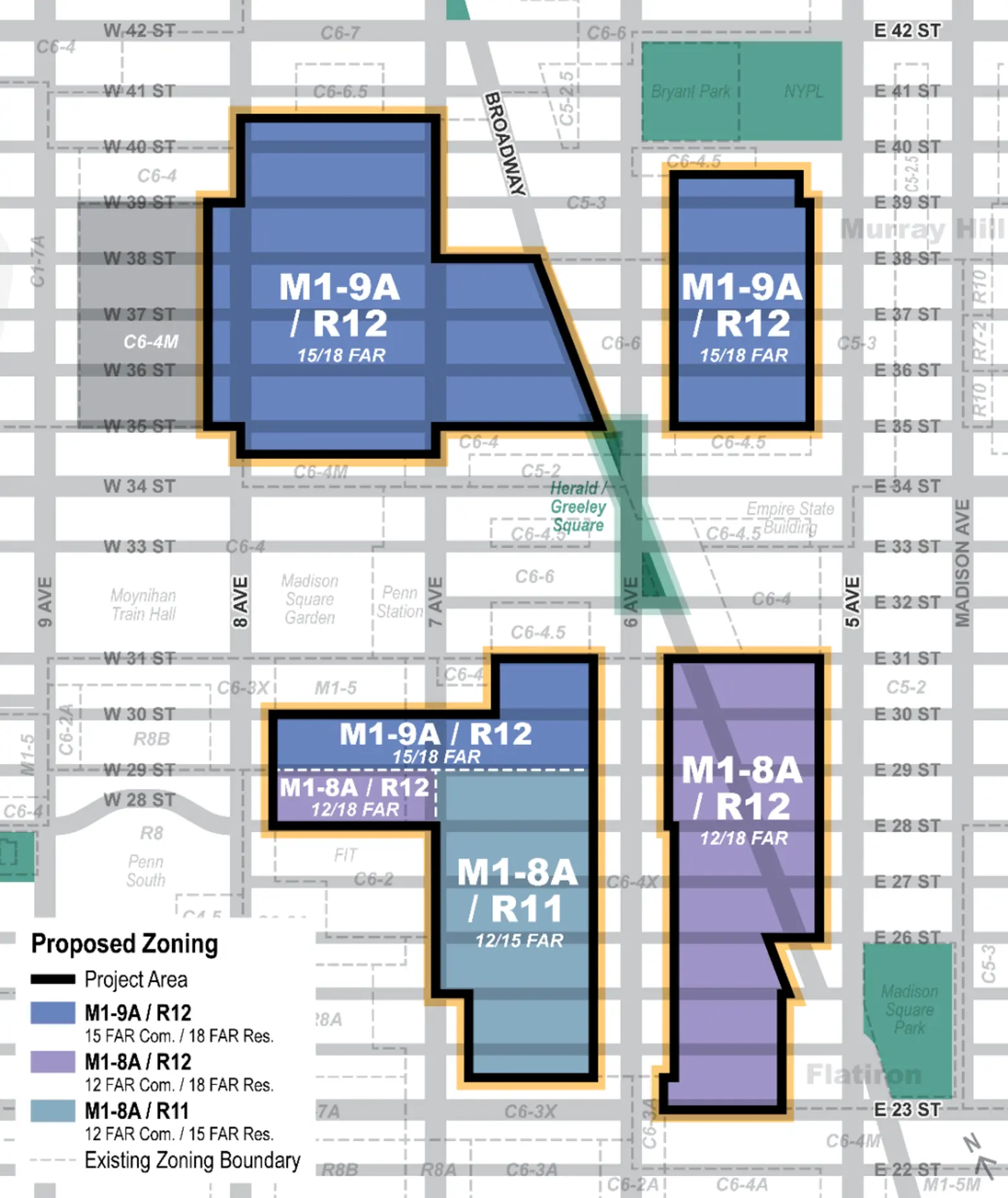
The zoning covers four quadrants of Midtown South between 23rd and 40th Streets and 5th and 8th Avenues, an area home to more than 7,000 businesses and 135,000 jobs.
Although the area remains a vital economic hub for the city, it faces increasing office and retail vacancies, older buildings, and antiquated zoning rules that hinder new housing development.
The Midtown South Mixed-Use (MSMX) draft zoning plan aims to address these challenges by accelerating office-to-residential conversions, lifting restrictions on developing new housing, allowing for live-work opportunities, and boosting economic growth by supporting businesses and creating new jobs.
In the updated zoning draft released this week, the plan maps new high-density, mixed-use zoning districts with residential FAR caps of 15 to 18, allowing for more housing, as well as commercial and manufacturing uses.
These new R11 and R22 districts were made possible by the lifting of the state’s FAR cap, which for many years has restricted the size of residential developments in NYC to 12 times the lot area. In April, the cap was lifted after pressure from the city and housing advocates.
“Midtown South is one of the most transit- and job-rich areas of the city, but it’s long been held back by antiquated zoning that has restricted new housing,” DCP Director Dan Garodnick said.
“With action in Albany, we’re moving quickly to put new zoning tools to work to deliver more of the homes that New Yorkers urgently need, while fostering a vibrant mix of commercial, manufacturing, and residential uses. It’s a bold step toward building a more inclusive and dynamic Midtown.”
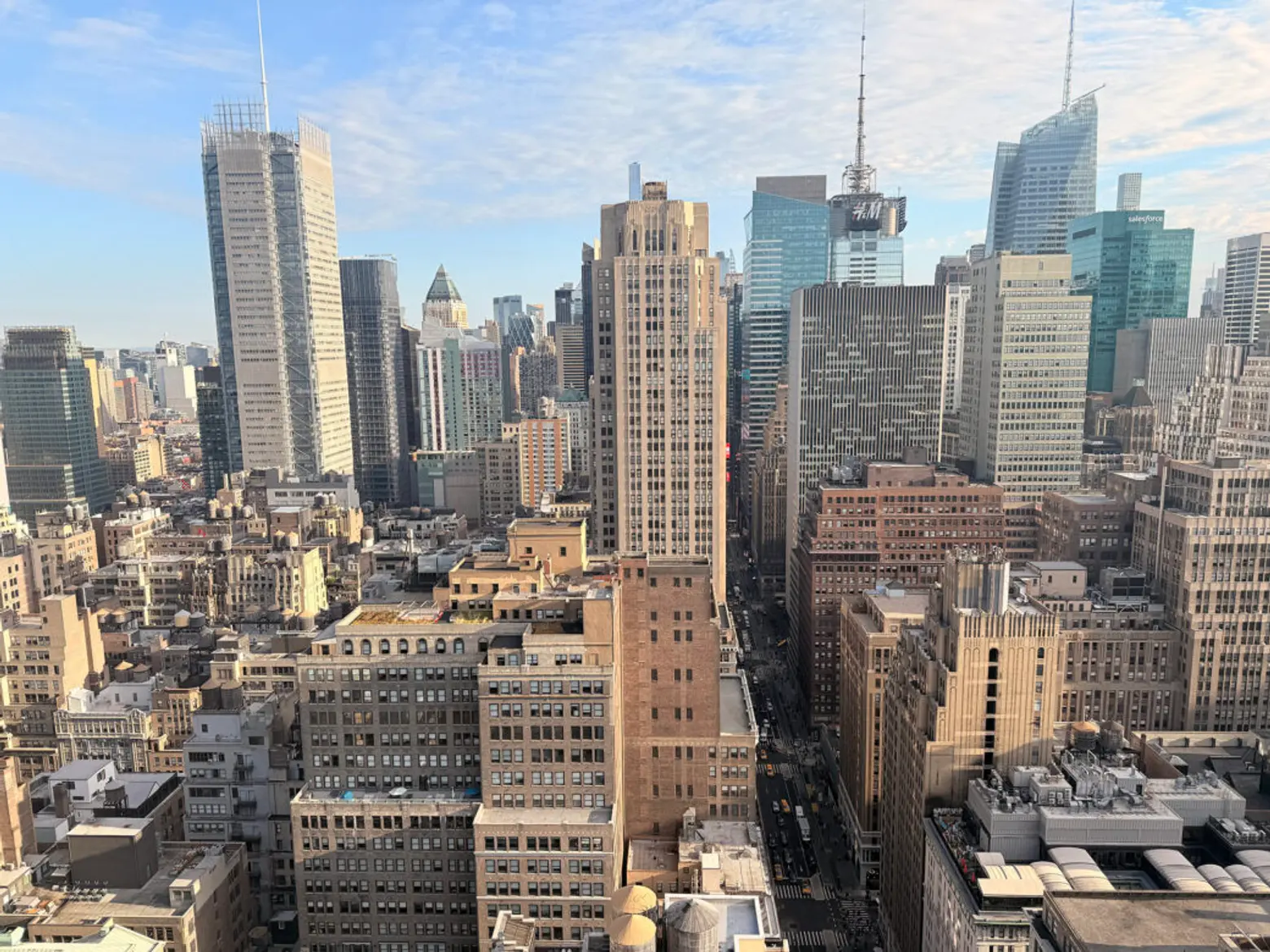
Mayor Eric Adams advocates for including new zoning districts with FARs above 12 as part of his City of Yes for Housing Opportunity plan, which will soon be voted on by the City Council.
These districts would use Mandatory Inclusionary Housing (MIH), creating a powerful tool to deliver urgently needed homes, including permanently affordable, income-restricted units in high-demand areas like Midtown. Midtown South would be the first area to implement these districts.
Of the 9,700 projected homes, with MIH requirements in place, the rezoning would 2,800 new permanently affordable apartments.
The MSMX plan will create a new special district to ensure new buildings have active street fronts and allow for larger buildings if they include public improvements, such as transit access, privately-owned public spaces (POPS), or indoor public areas like atriums.
It would also match the new R11 and R12 districts with M1-8A and M1-9A districts, allowing for non-residential uses, including light manufacturing, office space, and retail.
Outside of the immediate plan area, the zoning proposal would also remove existing housing restrictions in some of the mid-block areas from West 35th to West 39th Streets.
In August, Adams first announced plans to update zoning laws in Midtown Manhattan to transform the neighborhood into a dynamic, live-work community with affordable housing and quality jobs.
As part of the plan, office-to-residential conversions would be expedited by allowing office buildings constructed before 1990 to be converted to housing. The current cut-off for conversions is 1961 or 1977, depending on the area. This could free up 136 million square feet of office space across the city to become apartments.
“Last year, we went to Albany and secured New York City’s ability to create greater density housing districts where it makes sense, like Midtown South, one of the most transit-rich neighborhoods in the five boroughs,” First Deputy Mayor Maria Torres-Springer said.
“I am excited that the Midtown South Mixed-Use Plan will apply these new zoning tools to unlock 10,000 units of housing, including up to 2,800 permanently affordable homes, stimulate meaningful investments in the public realm, and accelerate the growth and dynamism of Midtown more broadly.”
As The City first reported, City Planning hopes to certify the zoning to enter the land use review process around the end of the year.
In August, the City Council voted to approve an East Bronx rezoning around four planned MetroNorth stations, the first approved under the Adams administration.
RELATED:












